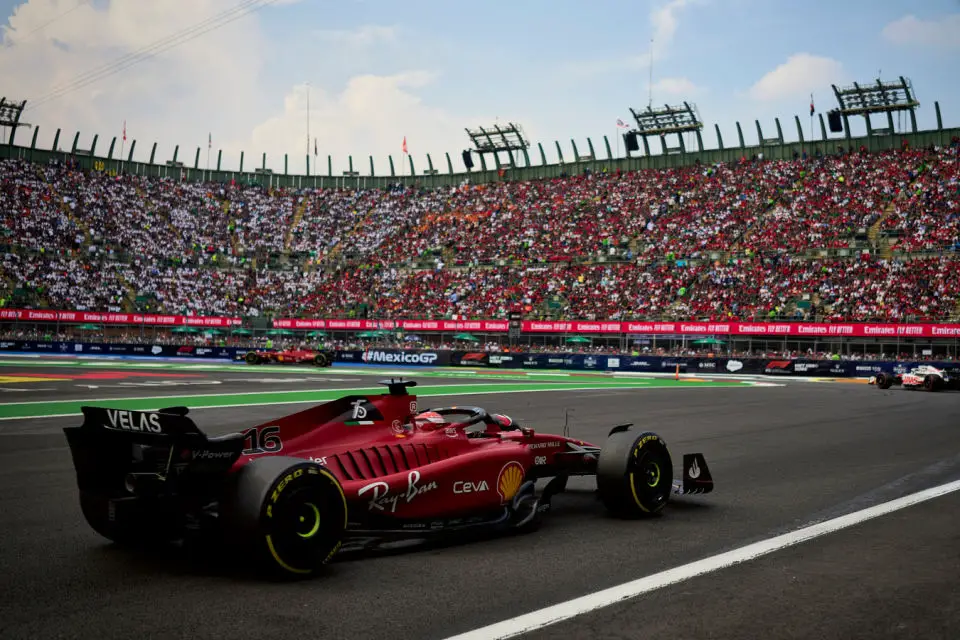Overcoming Altitude: How F1 Teams Tackle Racing at 2000m in Mexico’s Grand Prix
The recent Mexican Grand Prix highlighted the unique challenges F1 teams face when racing at high altitudes. With the Autódromo Hermanos Rodríguez situated 2000m above sea level, teams had to adapt to the thinner air, impacting car performance and strategy.
Key Takeaways:
- Power Output Adjustments: Teams had to modify power output due to less oxygen for combustion, with turbochargers running 15% harder to compensate for thinner air. This raised concerns about reliability and the intake of warmer air.
- Cooling Strategies: Cooling car components became a significant challenge due to the lack of dense air. Teams possibly introduced more vents in the bodywork and closely monitored components like brakes that rely on dense air for cooling.
- Aerodynamic Compromises: The thin air impacted downforce, leading teams to opt for high downforce setups similar to Monaco. Despite this, achieving maximum downforce remained a challenge, even with the car’s wings fully upright.


The Mexican Grand Prix, a race unlike any other in the F1 calendar, recently unfolded at the Autódromo Hermanos Rodríguez, presenting a unique set of challenges for racing teams. The track’s elevation at 2000m above sea level means the air is considerably thinner than at most other circuits. This natural phenomenon significantly impacts the cars’ performance, compelling teams to employ unconventional strategies and setups.
At this elevation, the air’s reduced density means less oxygen is available for both drivers and engines, a factor that significantly influences various aspects of the car’s performance. Teams are faced with the task of rethinking their usual strategies to ensure their cars remain competitive under these unusual conditions.
The Power Output: A critical area of focus is the car’s power output. The reduced oxygen levels at high altitudes mean that the internal combustion engines receive less oxygen, leading to a compromise in power. To address this, teams have adjusted their cars to maintain high speeds. The turbocharger plays a vital role here, working 15% harder than usual to maximize air intake. However, this raises concerns about the turbocharger’s reliability and the potential intake of warmer air due to the high revolutions per minute (RPM), which could affect engine performance.
Cooling The Components: Another significant challenge is cooling the car’s components. In denser air, cooling is more efficient as more air passes through the car’s vents and channels. However, at high altitudes, the thinner air makes this process less effective. Teams have likely introduced modifications like additional vents in the bodywork to improve airflow. Special attention is required for components like brakes, which reach extremely high temperatures and are crucial for the car’s performance.
The Aerodynamics: Aerodynamics is another area heavily impacted by the thin air. Creating downforce is essential for keeping the car stable on the track, but the lack of dense air means that the usual downforce levels are hard to achieve. Teams have opted for high downforce setups, akin to those used in Monaco, but even these setups struggle to provide the desired level of downforce in the thin air of Mexico. Despite this, cars can still achieve high speeds due to the reduced air resistance.
In conclusion, the Mexican Grand Prix presents a unique challenge for F1 teams, testing their technical prowess and adaptability. With every team facing similar conditions, the event becomes a fascinating battleground for innovation and strategic thinking. The adjustments made in power output, cooling, and aerodynamics are critical in overcoming the hurdles posed by the high altitude, making the race an intriguing spectacle of engineering and sportsmanship. As the teams navigate these challenges, the Mexican Grand Prix remains a standout event in the F1 calendar, showcasing the relentless pursuit of excellence in the face of nature’s challenges.



